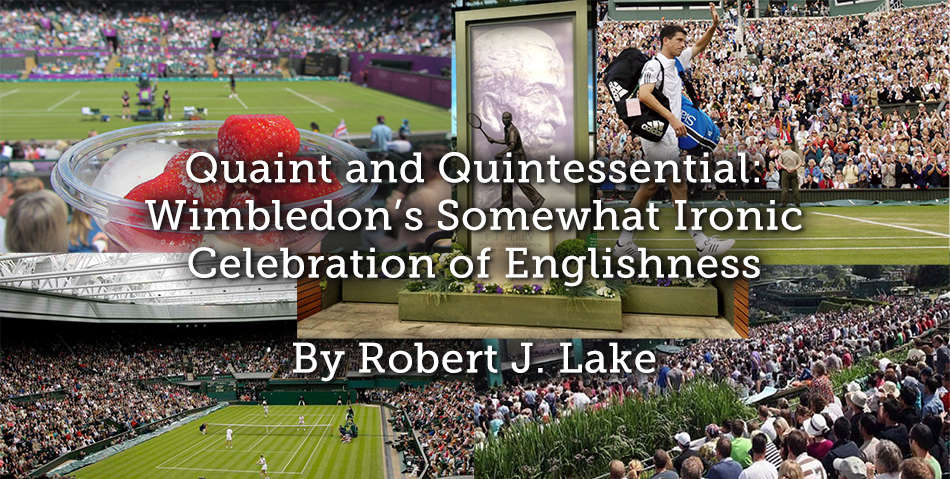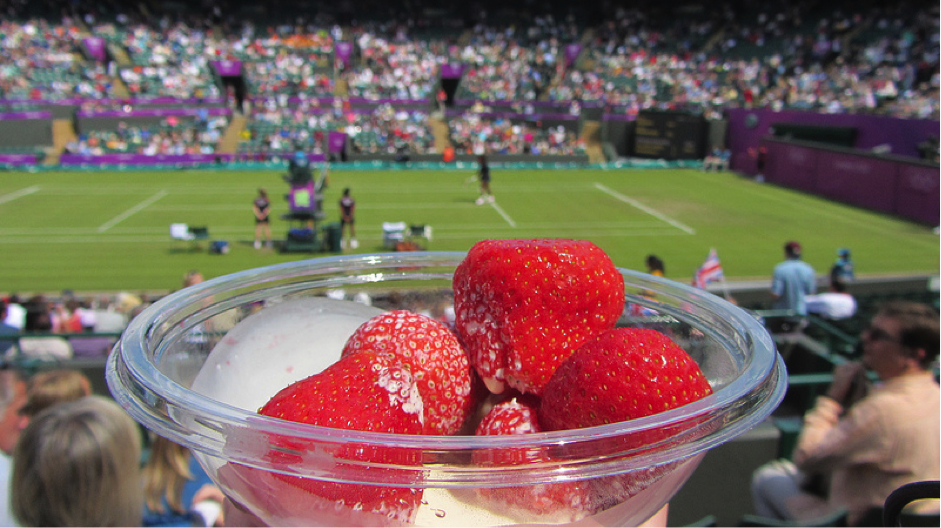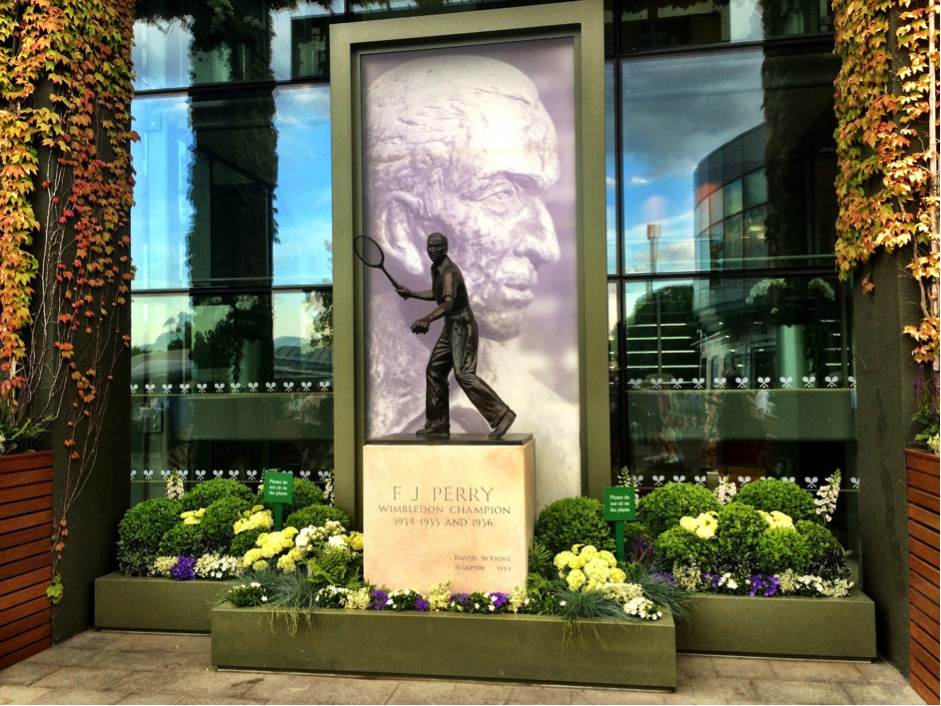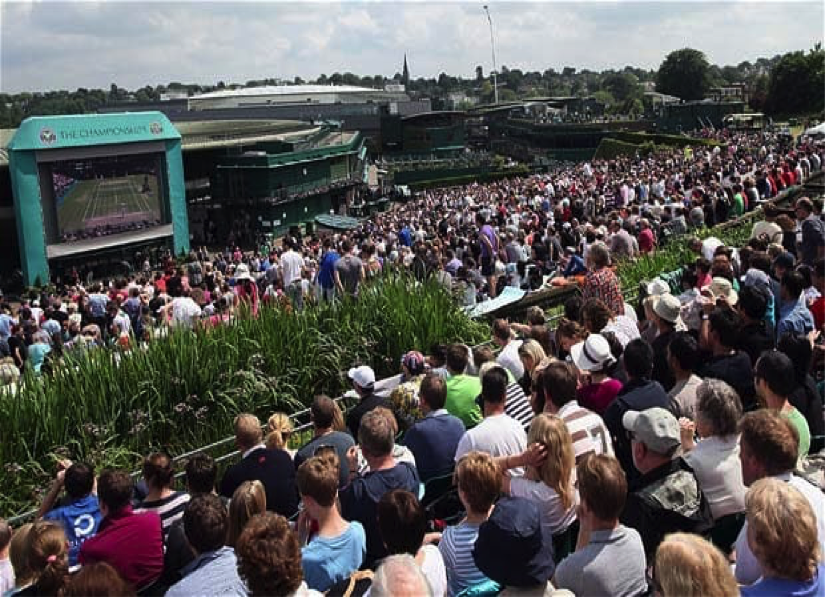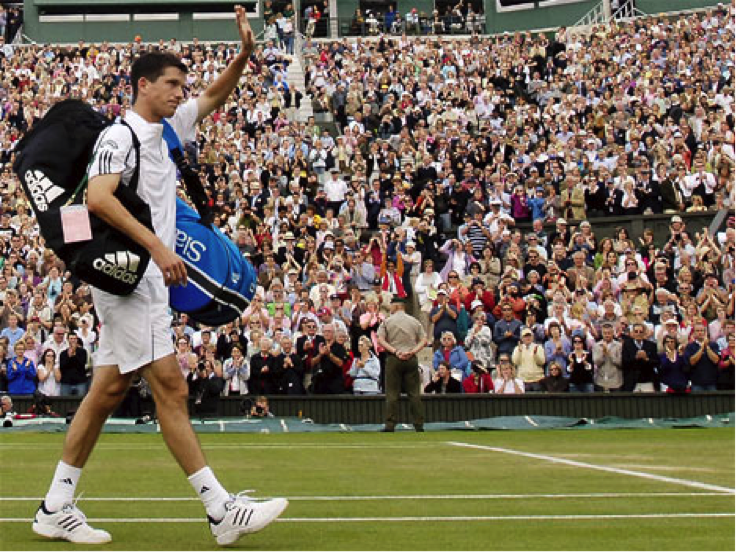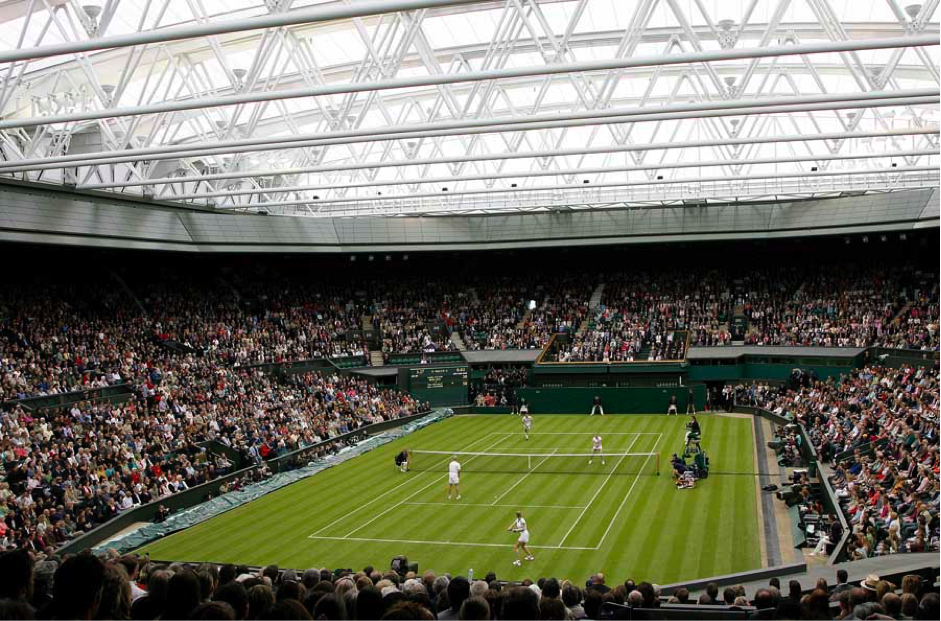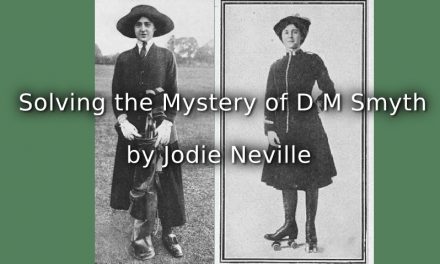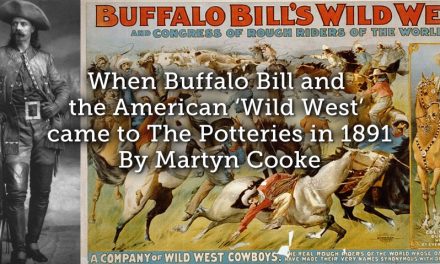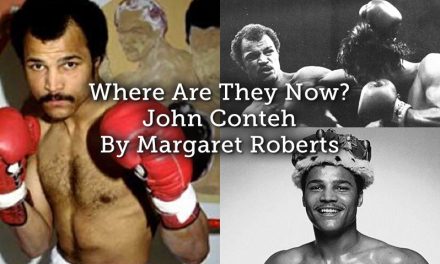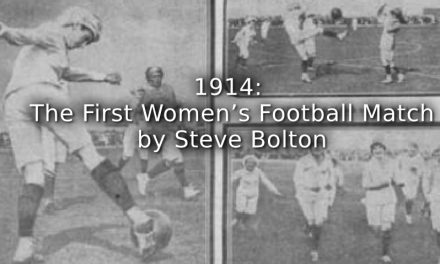Just as tennis enters its off-season following the end-of-year ATP Tour World Championships won this year by the new world-number-one-player Andy Murray, it is worth remembering that another tournament has, for almost 140 years, laid claim to being the sport’s de facto world championship. For numerous reasons – many of them historically-rooted – the Wimbledon Championships is the jewel in tennis’ crown, but also, for the British and specifically the English, a key annual focal point in rearticulating national identity.
In his published autobiography, Chris Gorringe, Wimbledon’s previous chief executive referred to the Championships’ marketing strategy as: ‘tennis in an English garden’. When walking the grounds of the All England Lawn Tennis Club, which plays host to Wimbledon, the nostalgia for the past that celebrates and glorifies quintessential “Englishness” is everywhere in abundance.
Perhaps the most recognisable features are its grass courts and all-whites clothing. While the U.S. and Australian Opens swapped their grass for hard courts in 1976 and 1980 respectively, Wimbledon stubbornly retained it. Alan Mills, Wimbledon’s previous tournament referee of 22 years, reasoned in his autobiography: ‘It is the grass that makes Wimbledon unique and distinctive. When people turn on their television at the start of that last week in June and see the lush green, perfectly manicured courts, they experience not just a thrill of anticipation bit a reassuring sense of continuity as well. Wimbledon has become part of our culture, a national institution, even for those who do not ordinarily show an interest in tennis, and this is because it has preserved its most important traditions’. The club’s mandatory all-whites clothing also occupies a similar pride of place. As the sport drew much of its cultural associations from cricket, the connection to this more established, exclusive and quintessentially English game gave lawn tennis a certain cache and cultural relevance.
Beyond these features, in fact, everything from the on-sale refreshments to the Virginia Creeper clinging to the Centre-Court building has been carefully selected to fit the Club’s preferred public image. Indeed, in Timeout magazine’s “Full Guide to the Wimbledon 2016 Tennis Championships”, the Things-To-Do Editors listed eating strawberries and drinking Pimms as essential activities. Strawberries have long been a popular summer-time accompaniment to afternoon tea, but were actually only introduced at Wimbledon in 1953, with cream added in 1970. The American tennis pundit Dave Whitehead, in a scathing but fairly tongue-in-cheek article from The Telegraph (3 July 2015) entitled “10 things no one tells you before you go to Wimbledon”, considers the strawberries an “invented tradition” – to steal Eric Hobsbawm’s phrase- and a ‘rip off’: ‘You know that lovely olde Englande tradition of eating scrumptious strawberries and cream at “Wimblers”? Well, it’s not that olde at all – and the strawberries aren’t that scrumptious. Still, it’s all part of the experience’. Indeed, on average, 140,000 portions of strawberries are consumed annually at Wimbledon, alongside 320,000 glasses of Pimm’s. According to a recent Adweek poll, Pimm’s was considered the number-one most recognized brand at Wimbledon, but its apparently “deep-rooted” history there is also less impressive, traced back only as far as 1957. The drink itself was first produced in London in 1823, but it is clear that Wimbledon’s increasingly marketable post-war image suited the company’s new branding; the recent advertising slogan “Pimm’s O-clock” has solidified the product’s connections with English summer garden-parties among the British upper-middle classes.
- http://www.funkidslive.com/sport/top-ten-wimbledon-facts/
The most prestigious catering establishment on the AELTC grounds – reserved during the Championships for debenture ticket holders only – is “The Wingfield” restaurant, named after the man, Major Walter Clopton Wingfield, widely credited for inventing lawn tennis in 1873. Little known to the general public, however, in 1877, the AELTC effectively banished Wingfield’s version of lawn tennis to the history books when they established their own set of playing rules, thereby rejecting his, for their inaugural Championships. Still, and more than slightly ironically, the AELTC continues to celebrate his name, a move intended to position Wimbledon as rooted deeply in the sport’s history, as if inseparable.
- http://eliteclubltd.com/2014/06/wimbledon-tennis-tournament/
In the spirit of celebrating all things (and people) proudly English, surrounding the Centre Court building are busts of all three post-war British Ladies Singles Champions (Angela Mortimer, 1961; Ann Jones, 1969; Virginia Wade, 1977). The most famous statue of all is of Fred Perry, Wimbledon Gentlemen’s Singles Champion 1934-36, and the last British male to win the event until Andy Murray in 2013. Again, it is somewhat ironic that Perry should be celebrated, given he was not a welcome figure in the British tennis establishment of the 1930s. Perry reflected in his autobiography about the AELTC’s decision to erect a ¾-size full statue of him in 1984: ‘There will be a few former members of the All England Club and the LTA revolving in their graves at the thought of such a tribute paid to the man they regarded as a rebel from the wrong side of the tennis tramlines’. It is likely because of Britain’s dire early post-war performances that Perry came to be afforded hero status; this trumped his outsider status and his apparent rejection of British identity when he eventually relocated to America and adopted U.S. citizenship.
- http://www.simonsjamjar.com/2014/06/yesterday-at-wimbledon.html
“Henman Hill” is perhaps another ironic twist in this story of Wimbledon’s celebration of Englishness. Named after Tim Henman, undoubtedly the best English player since Fred Perry – Andy Murray, of course, being Scottish – but also one of the best players of the last twenty years to have not won Wimbledon, this grassy knoll attracted a congregation of British tennis fans from 1997 onwards, when the club re-opened its new No1 Court complete with a massive wide-screen television positioned for fans without show-court tickets to picnic on the grass and watch the action. Arguably Henman’s quintessential (southern, grammar-school, upper-middle-class) Englishness was as much celebrated as his tennis success. His multiple near-misses, losing all four of his semi-finals (1998, ’99, 2001 & ’02) to the eventual champion, endeared him to the British public. He was constructed as a “plucky underdog”, an Englishman capable of occasional but often fleeting greatness, but clinging to the vestiges of former glories, much like the nation he was seen to represent. Through his respectable behaviour, conservative, and very English middle-class appearance, and even in his modest chip-and-charge approach that seemed a throwback to an earlier style of play, Henman reflected the nation’s hopes and desires in a broader sense. This referred to England though, not necessarily Britain. Indeed, at this time, Scotland and Wales were making strides toward political devolution, and despite Murray’s greater success, moves to rename the knoll Murray Mount failed to catch up, which nicely sums up inherent ironies of the British sporting mentality.
- http://www.telegraph.co.uk/sport/tennis/wimbledon/11697950/ten-tops-wimbledon-tennis-queue.html
What is also indicative of Wimbledon’s vision to represent English nostalgia is their anti-commercial stance, which they have managed to balance precariously with their impressive modernisation. They have managed to sustain traditions but not “sold out” as other tournament have done, by opening themselves up to crass materialism, or attracting title sponsors or courtside sponsorship. Certainly, Wimbledon’s post-war commercialisation has been understated, retaining BBC coverage in favour of more lucrative cable broadcasting deals, and rejecting all but the most subtle “product placement” from their carefully chosen corporate partners (e.g. Slazenger and Robinson’s). While some have criticized the AELTC for not capitalizing enough on their brand, others appreciated their efforts to retain charm over the pursuit of profits. Two-time Wimbledon champion Stefan Edberg (The Independent, 23 June 1996) admitted: ‘For me, and most of the other players too, if you had to pick one of the four Grand Slams, you would pick Wimbledon. It’s got tradition, it’s got atmosphere, and it’s got mystique’.
- http://www.dailymail.co.uk/sport/article-465038/Carve-pride-Henman-Hill.html
It is thanks to Wimbledon’s impressive income from international television rights that they can resist pressures to commercialise, e.g. in 2011, ESPN signed a 12-year broadcasting-rights deal worth an estimated $480 million. For the AELTC, the tournament’s high value and prestige comes from treading a fine line between being modern and old-fashioned. Beneath the “traditional” charms, Wimbledon is a cutting-edge and highly sophisticated commodity. Everything from its behind-the-scenes media boxes, corporate suites, catering facilities, player lounges, changing rooms and under-ground facilities is tightly monitored and expertly arranged to ensure maximum comfort and efficiency. This has meant the club and its tournament can invoke feelings of “amateur” nostalgia – celebrating former amateur stars and giving primacy to traditional sporting values like fair play, honesty, and respect for opponents – without being “amateurish” in its organization and management. Indeed, this is perhaps the AELTC’s greatest selling point, and so long as it continues to provide a high-quality product, in its tennis, catering, comfort and facilities, their quaint English traditions will retain their value.
- http://www.e-architect.co.uk/london/wimbledon-centre-court-roof
Article © Robert J Lake
References
Gorringe, Chris. Holding Court: Inside the Gates of the Wimbledon Championships. London: Arrow Books, 2009.
Mills, Alan. Lifting the Covers: Alan Mills, the Autobiography. London: Headline, 2005.
Perry, Fred. Fred Perry: An Autobiography. London: Arrow Books, 1984.

